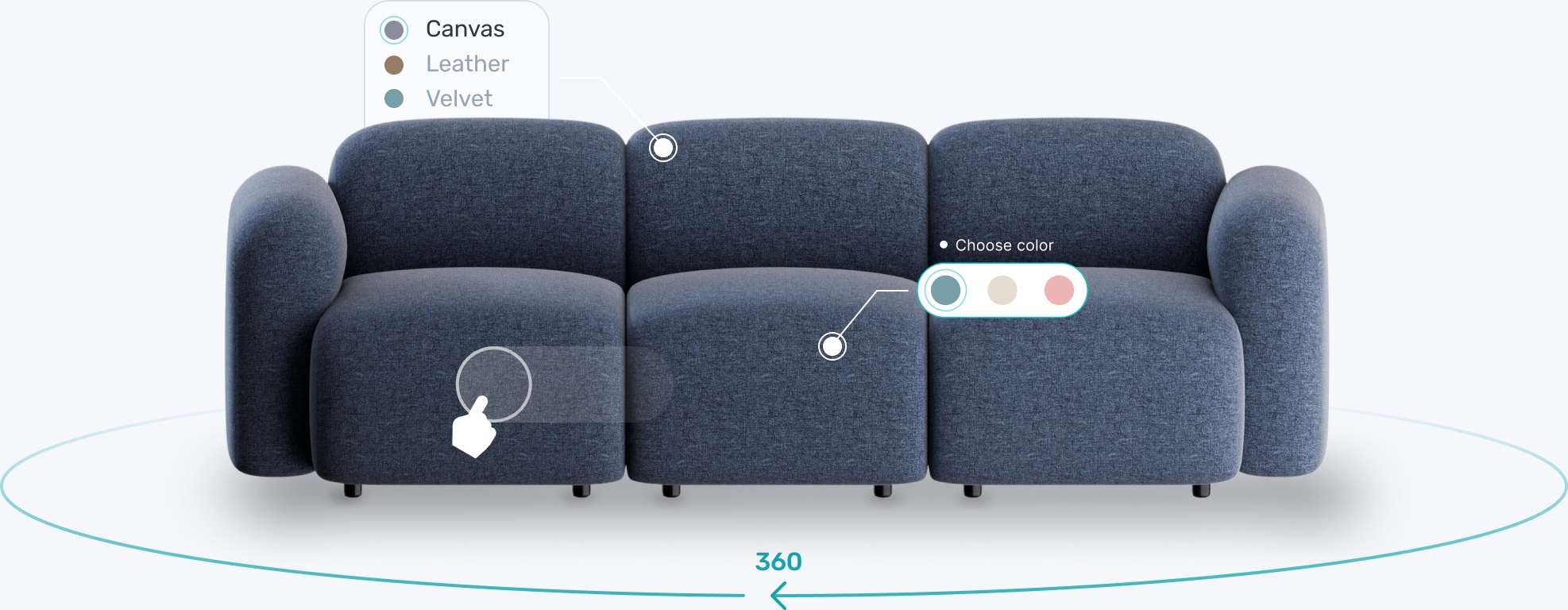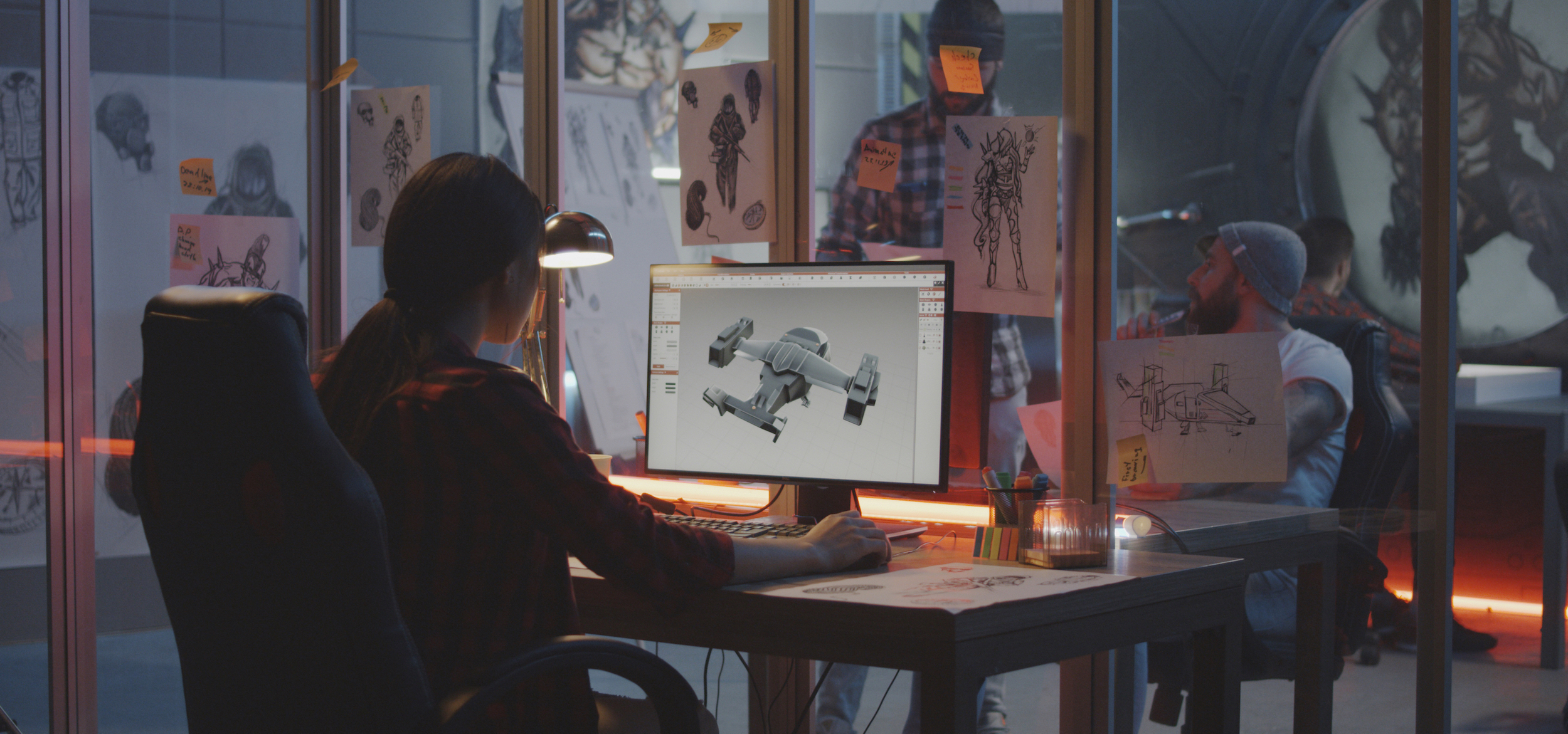Transform your eCommerce strategy with 3D & AR





In the past, showcasing product ranges was all about studio photography, and life wasn't always easy.
Retailers would need to arrange traditional shoots for every product, taking static photos from multiple angles to give consumers an idea of what they were buying. Nowadays, things are much simpler.
Modern 3D virtual photography allows online sellers to create large image galleries which show off their products while providing customers with ways to explore and get to know them.
Because it is based around 3D rendering, virtual photography is flexible and affordable, making it a great solution in many cases. It could also be the technology that takes your store to another level.
Not every retail challenge is suited to 3D photo capture, but it's starting to play a key role across the eCommerce sector. In this blog, we'll take a look at what it offers and when it can replace traditional techniques.
Traditional photography and 3D virtual photography have the same core aim: creating high-fidelity images that persuade customers to browse and buy products.
However, the two imaging technologies are actually very different. Understanding how they differ can be vital to deciding which method to choose.
Virtual imaging, therefore, seems to have some major advantages over traditional methods. Even so, old-school camera fans might claim that conventional shoots deliver richer images that are more compelling for customers.
However, that's not really the case anymore.
With today's modeling software, it's easy to add lifestyle backgrounds, rotate photos, and even go inside for cutaway shots. Images can be tweaked and refined instantly without the need for reshoots. The result is a whole new level of customization for customers and sellers alike.
3D photography may seem complex, but the process is actually surprisingly simple and accessible.
Let's say you need to model a smart speaker for a technology store. In that case, we start with a product 3D design file for the speaker concerned. This acts as the raw data to start the process off.

This design file could involve sourcing 2D photos, but this isn't always necessary. 3D models can be created from CAD templates or scanned automatically without needing cameras of any kind. In any case, the outcome is a raw 3D model, which forms the basis for the 3D photography process.
The next step is to plug this design file into modeling software. This software allows modelers to render multiple images of the speaker. They can swivel to any angle, flip it completely, zoom out to any distance or depth.
Modelers can also set the scene for purchasing by changing the background to display the speaker in living rooms, bedrooms – whatever makes the most sense for the target audience.
After that, marketers can use integrated tools to post these 3D speaker photos directly onto online catalogs. Customers can then browse them within hours of starting the imaging process.
When you take a step back, that's pretty impressive.
Imagine how many steps would be involved in achieving the same results via traditional photography. Photographers would need to create different sets, fine-tune the lighting, manually frame the speaker. Then technicians would need to ensure that the photos were suitable for eCommerce platforms.

3D photography could potentially broaden your selling horizons. As we've seen, it comes with various advantages that make it a serious option for many projects. For instance, with 3D virtual photos, you can:
To start with, 3D photography can often simply produce better results than traditional methods. Remember, the aim of the process is to create images that sell products, not to create visually perfect works of art.
3D imaging lets modelers precisely control the use of colors, tints, and lighting. They can experiment with different angles and backgrounds. In other words, 3D methods provide freedom to discover what works best for every product.
If you stick to standard techniques, you may find that your options are limited. With 3D alternatives, you can change things around at will.
As anyone who has put together a large product catalog will agree, that kind of freedom is also extremely reassuring. If something doesn't work, don't worry. Just change things until your photos achieve the desired results.
Of course, there will be some situations where you need to capture beautiful photos using professional expertise. But even then, most companies will find that mixing 3D and 2D capture makes sense.
For example, real estate vendors may want to combine lush exterior shots of properties with interactive interior models. But for most online sellers, the versatility of 3D image capture is likely to be a much more appealing option.

Right now, it feels like 3D photography is the natural successor to traditional imaging. In fact, many major global brands have already made the switch with beneficial results.
For example, Swedish furniture giant Ikea embraced 3D photography years ago to craft its popular online and print catalogs. Most shoppers wouldn't guess that 75% of Ikea's catalog photos are 3D rendered. This lets the company create country-specific background images while radically cutting costs.
The same applies to boutique furnishings retailer Made.com, which uses 3D photos to familiarize shoppers with premium products. Meanwhile, Bumbleride allows customers to inspect 3D photos to find the perfect stroller, while Nike has used a combination of AR and 3D images to revolutionize sneaker fitting.
3D photography reaches across different sectors and product categories. From furnishings to footwear, it can transform the ways customers interact with products, and it is well within reach of virtually any brand.
If you'd like to find out more about the process and potential of 3D virtual photos, feel free to get in touch with the Modelry team. We'll be happy to explore in more depth how to add an extra dimension to your online operations.




